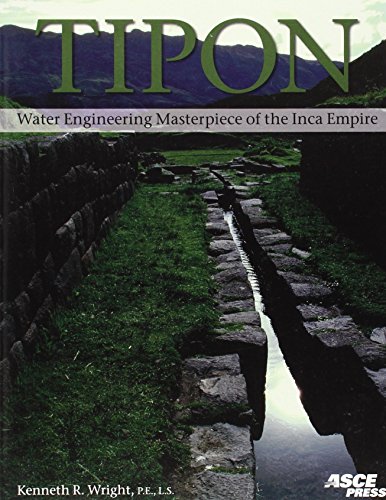About this Item
INSCRIBED AND SIGNED BY THE AUTHOR, Kenneth R. Wright. Near Fine in Wraps: shows only the most minute indications of use: just a hint of wear to extremities; bump at the heel of the backstrip has caused a slight buckle and an even milder bump at the head of the backstrip has caused barely discernible buckle to the text block and wrapper covers. The binding remains square and secure; the text is clean. Very close to 'As New'. NOT a Remainder, Book-Club, or Ex-Library. 4to. 168pp. Profusely illustrated with photographs in black & white, with an eight-page section of color photographs. First Edition [2006], unstated. Paperback: Pictorial Wraps. Ken Wright calls Tipon a "water garden." Because it's written by an engineer, you might think this book is loaded up with too much technical detail. Instead, what emerges through good writing and analysis is a fascinating description of Andean/Peruvian topography, history, culture, climate, environment, religion, agriculture, government, engineering, and public works construction spanning 2000 years. Visiting Tipon in March of 2005, I found the draft manuscript of this book to be of tremendous assistance in focusing on Tipon's stunning utility, in addition to its musical beauty. The sight and sound of running water is everywhere. From the book you learn about many features of Tipon and the Andean experience you do not obtain from current travel books, or from the Peruvian guides assigned to you by the tour companies. Visiting this site not far outside Cusco is the perfect compliment to Machu Picchu, whose civil engineering and visitor features are the subject of two other books co-authored by Ken and Ruth Wright with Peruvian anthropologist Alfredo Valencia. Located in a high ravine above the Cusco Valley, Tipon is a paradigm of careful water planning for food supply and ceremonial purposes. Its aesthetic, highly functional design holds an ascending stair-step arrangement of skillfully constructed agricultural terraces for the growing of maize. A comprehensive drainage system underlies the entire site. Points of water-discharge slot through walls of shapely-fitted stone that contain fertile soil the workers brought in for cultivation. These people knew that carefully tended earth was vital to survival, so they created places within the mountain sides built to be earthquake and erosion resistant. Water ritual was also vital to their way of life. In the ceremonial center of Tipon, a perennial spring feeds a magnificent fountain. Four jets of singing water fall gracefully into a splash pool. This water is drinking water pure. The jets are well-designed for easy filling of water jars. After stilling, the water trails down onto the lower agricultural terraces. The upper agricultural terraces receive their watering through a surface diversion from the Rio Pukara 0.84 miles away. Three canals and an aqueduct system take this river water into Tipon for irrigation, supplementing spring water for growing crops. These people early- practiced conjunctive use of ground and surface water. You ascend the agricultural terraces one-by-one along a walking path. At your feet a stone channel runs water. You can see and hear many other conduits conducting water across and through the walls, down wall-faces, along wall footings. Few sites in the world resound like this! Yes, it's a water garden. Above all looms 13,000 foot Tipon Peak on which the Cruzmoqo is prominent. This is a revered shrine, signal station, and security outpost site marked with ancient petroglyphs. You can circumnavigate by foot an entire mountain side, and feel why the Quechua people have always believed these mountains are sentient. When you see and understand Tipon in combination with Machu Picchu through the Wright and Valencia books, you appreciate the grace, beauty, ability, and spirituality of the Andean people of the Cusco region. The Inca perfected Tipon into a royal estate, but people of the area grew crops and lived within this ch.
Seller Inventory # 44427
Contact seller
Report this item
